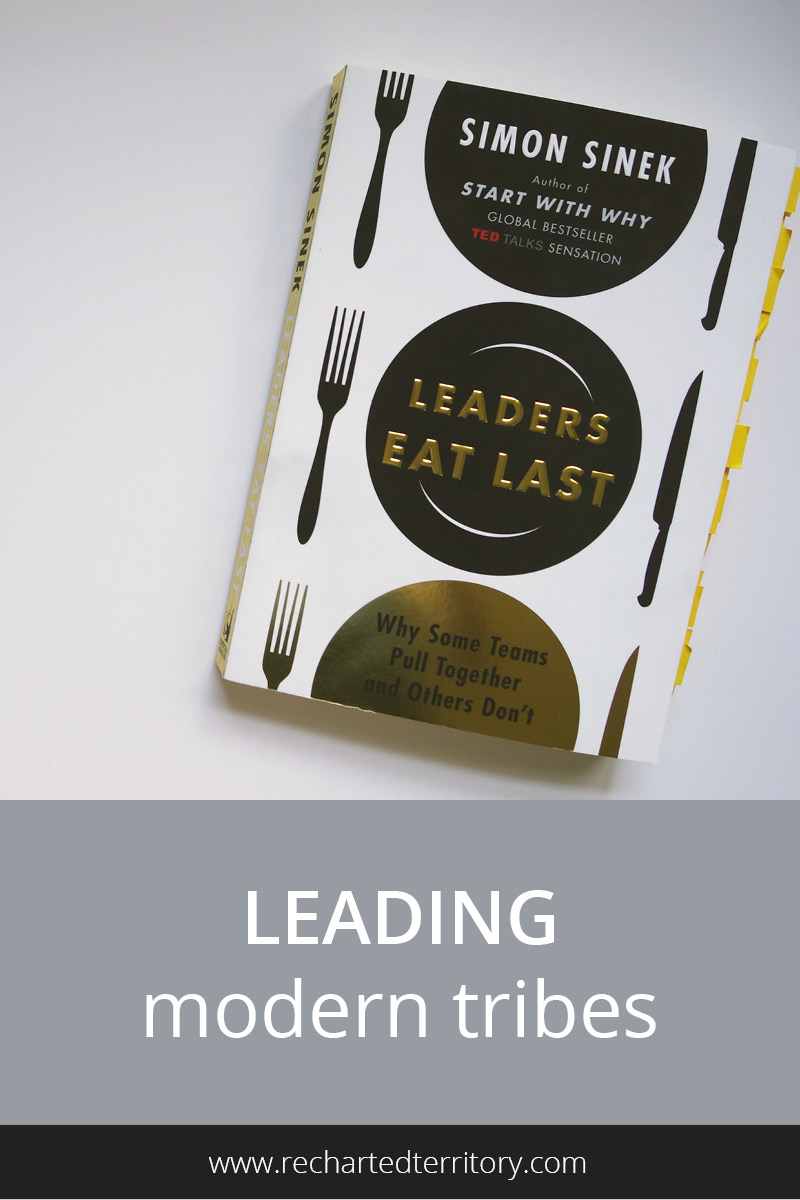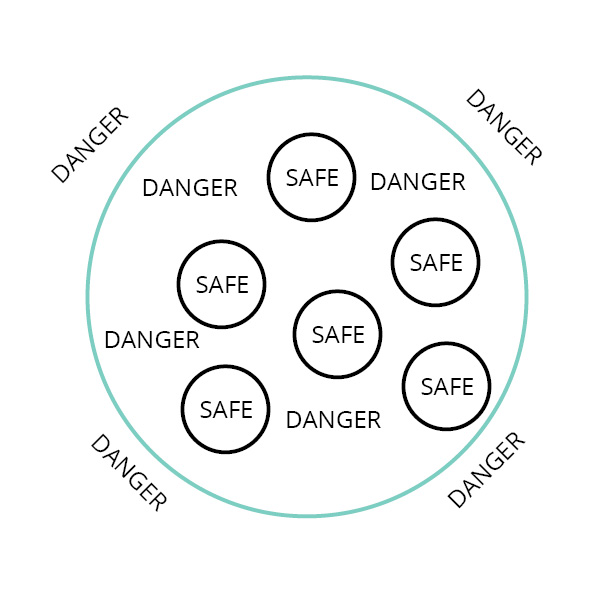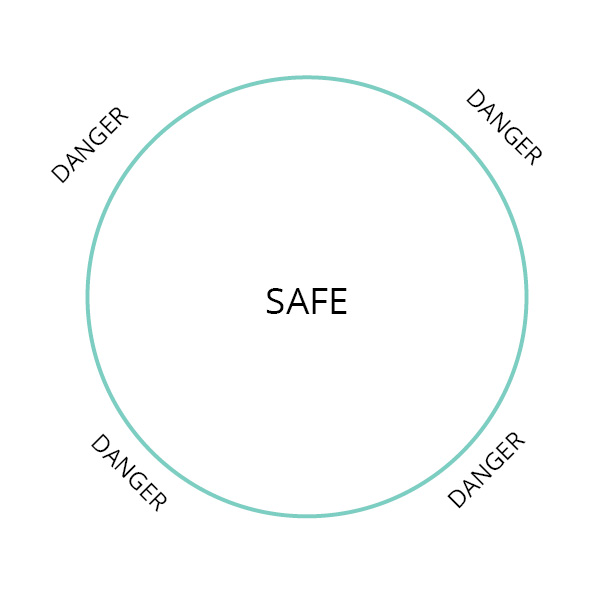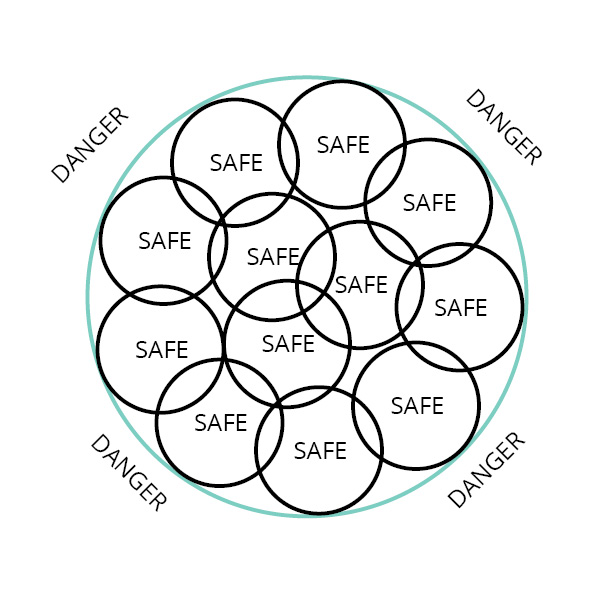.

The message in November’s reading list pick, “Leaders Eat Last: Why Some Teams Pull Together and Others Don’t” by Simon Sinek is hopefully not new. But the way he unfolds the argument is a good reminder of how some of our basic motivations impact how we interact with the leaders and followers in our lives.
Basically, Sinek’s advice for leaders is to put other people first (in other words, put yourself last). He outlines the chemistry behind why this strategy is effective and shares stories about leaders who effectively leveraged this mindset (and others who didn’t).
The chemistry behind it all
Four primary chemicals help us feel happy: endorphins, dopamine, serotonin, and oxytocin. They all evolved to keep us motivated enough to do what was necessary to survive. They’re part of nature’s incentive system.
Of the four primary chemical incentives in our bodies, two evolved primarily to help us find food and get things done while the other two are there to help us socialize and cooperate.
– Simon Sinek
Endorphins mask physical pain and dopamine helps us feel good when we find what we’re looking for or make progress. Shopping, checking items off your to-do list, and clear business goals are motivational thanks to dopamine. Serotonin contributes to the feelings of pride, confidence, and increased status we get when we feel valued by others. It reinforces bonds between leaders and followers, ensuring that we feel accountable to people who protect us or sacrifice for our gain. Oxytocin helps us feel safe with others, by promoting feelings of trust and loyalty. We need a balance of all four to make meaningful and fulfilling progress.
In contrast, cortisol helps alert us to danger. It’s responsible for our stress and anxiety when we’re worried about some looming threat. Cortisol inhibits oxytocin, which is bad for business settings because oxytocin helps us think creatively and solve complex problems. The bonding that oxytocin provides also helps us stay focused on long-term progress instead of just short-term gains. When companies stop investing in people, and oxytocin drops and cortisol rises, there tends to be a drive towards commoditization, with a race to the bottom and the lowest price.
Sinek uses the concept of Circles of Safety to highlight why some environments are effective while others erode the team’s potential. In the diagram below, let’s say that the aqua circle is the boundary of your company. If your organization looks like this, everyone will be so focused on protecting themselves from internal dangers, that there will be less time, resources, and creativity for tackling external opportunities and threats. (Note: the following three graphics were adapted from images in the book)

Sinek essentially argues that a leader’s goal should be to balance the four primary chemicals, lower cortisol, and expand the Circle of Safety so your team members are focused on external threats instead of internal ones, like the picture below.

Or more likely this one if you’re working in a complex enterprise with more than 150 people. In that case, it would be harder for everyone to build strong enough relationships with everyone else, so you’d need to build trust between the sub-groups.

How do we expand the Circle of Safety?
Tips for leaders
- Don’t try to change your employees. Change the environment in which they operate.
“What too many leaders of organizations fail to appreciate is that it’s not the people who are the problem. The people are fine. Rather it’s the environment in which the people operate that is the problem. Get that right and things just go.”
– Simon Sinek
- Be wary of creating or promoting a self-preservation environment. In an environment where self-preservation wins, people tend to hoard information because they feel that sharing it would make them expendable. When people feel safe they share information, which allows ideas to move through your company and be used in other divisions or in the future. While it might seem effective in the short-term, a command-and-control leadership style can be even worse for long-term productivity because it feeds a self-preservation culture.
“…command and control perpetuates a system in which people will more likely do the thing that’s right for them. Uncertainty, silos and politics- all of which thrive in a command-and-control culture and work counter to the concept of a Circle of Safety- increase our stress and hurt out ability to form relationships to the point where self-preservation becomes our primary focus.”
– Simon Sinek
- Serve others without looking for recognition yourself. Leaders look out for the people around them. They also provide cover for people below them. “Leaders” who look out mainly for themselves and their own power and wealth are viewed as tyrants. Those types of leaders also tend to surround themselves with a small circle of trusted advisors, viewing others as threats. Unfortunately, that sends a signal to other people in the organization that they should also be looking out for themselves. So help others and stay humble. Any perks of the job are usually just that, perks for the job, not about you and your personal greatness.
“All the perks, all the benefits and advantages you may get for the rank or position you hold, they aren’t meant for you. They are meant for the role you fill. And when you leave your role, which eventually you will, they will give the ceramic cup to the person who replaces you. Because you only ever deserved a Styrofoam cup.”
– a former Under Secretary of Defense
- Think of your company as a family and the leaders are the parents. Would you fire your kids when money got tight? Companies that treat their employees like children (in a good way) focus more on hiring the right people, coaching them, or finding them opportunities in other companies if it’s not working out. These organizations invest in training and providing more responsibility, further increasing trust that people know what to do and when to break the rules. Rather than working for a paycheck, employees who feel like part of a family are proud to promote the company and work to achieve its goals. Businesses adopting these strategies have seen performance rise. Employees want to help grow a company that will use the extra resources to further invest in the “family.”
“The leaders of great organizations do not see people as a commodity to be managed to help grow the money. They see the money as the commodity to be managed to help grow their people.”
– Simon Sinek
- Listen to employees before making decisions without information. A common leadership mistake is making a decision without asking others for information to avoid appearing “weak.” Unfortunately, issuing orders without full information could cause more problems. Or encourage people to blindly follow you without sharing insights or asking questions. A command-and-control approach often doesn’t work when people at the bottom have more information but less authority than people at the top. So if you’re a leader in an unfamiliar environment, ask questions. Focus more on setting a direction, not the specific tactics, so people with more information can make better decisions.
“The goal of a leader is to give no orders. Leaders are to provide direction and intent and allow others to figure out what to do and how to get there.”
– Captain Marquet
- To earn trust you need to extend trust. Treat everyone like humans and don’t treat some people as more trustworthy just because of their university degree or background. Knowledge doesn’t automatically equal trustworthiness. I think that we could reframe this to don’t assume people with a similar background as you are more trustworthy. Unfortunately too often companies create their own Downton Abbey upstairs/downstairs vibe.
- Manage abundance and accelerate bonding. The less we have, the more often we tend to share. Our modern culture of abundance has thrown this out of whack. Our society encourages dopamine and individual achievement over working together and building trust. Thanks to technology and institutions, we’ve created systems with massive scale and scope. One problematic outcome is the abstraction of people, which makes it harder for us to relate. Numbers can help motivate us, but when it comes to people, numbers are harder to empathize with. As a leader, you can improve empathy by having people work together in person, keeping groups to less than 150, and meeting the people you’re helping. It takes time to build up trust, but spending time together outside of the normal context can help accelerate bonding.
- Reframe danger and set targets. Humans adapted to work hard and survive in the face of danger. If we trust people, we invest time to address outside danger. Even going through hardship can be a positive experience if the team shares the burden. If we don’t trust others, then we invest time protecting ourselves from internal dangers, at the expense of focusing on external problems and opportunities. As a leader, use danger to your advantage by reframing the “struggle” to outside of your organization instead of within it. Set big, motivating targets instead of small, incremental ones, to inspire people to bond together in pursuit of the goal.
- Tell the truth instead of trying to “spin” it. Whether you’re talking to employees, investors, or customers, people can often tell when you’re hiding something, which erodes trust.
- Followers also need to make their leaders feel safe. Whether you see yourself as a leader or not, you’re also following someone. Leaders also need endorphins, dopamine, serotonin, and oxytocin to feel happy, trusted, and respected. Show signs of respect, bond, and help highlight team wins to help other leaders boost their own chemicals. Leaders who feel trusted by their own teams are more likely to focus on helping the team vs. worrying about their own self-preservation.
As an engineer, I completely get the allure of logic and optimization. Sometimes focusing on the softer skills can seem less productive. But this book reminded me of the chemistry behind why empathy and bonding are so valuable for being a better leader. While it might seem like you’re not getting immediate results, your team will benefit in the long run.
What other insights did you pull from this book?